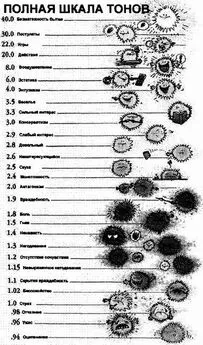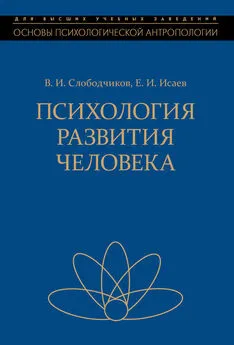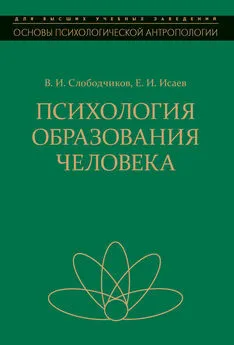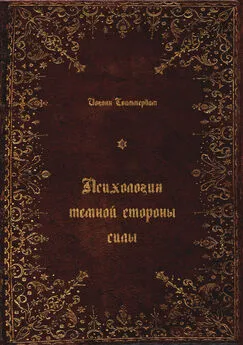Джулия Шоу - Психология зла. Почему человек выбирает темную сторону
- Название:Психология зла. Почему человек выбирает темную сторону
- Автор:
- Жанр:
- Издательство:Альпина Паблишер
- Год:2020
- Город:Москва
- ISBN:978-5-9614-3544-3
- Рейтинг:
- Избранное:Добавить в избранное
-
Отзывы:
-
Ваша оценка:
Джулия Шоу - Психология зла. Почему человек выбирает темную сторону краткое содержание
«Психология зла» - это подробное и увлекательное исследование темной стороны человека. Доктор Джулия Шоу на примерах из массовой культуры и реальной жизни предлагает порассуждать о проблемах, о которых обычно молчат, хотя знание факторов, способных спровоцировать недопустимое поведение, помогает замечать их и не давать им развернуться в полную силу.
Психология зла. Почему человек выбирает темную сторону - читать онлайн бесплатно ознакомительный отрывок
Интервал:
Закладка:
Korva, N., Porter, S., O’Connor, B. P., Shaw, J., & Brinke, L. T. ‘Dangerous decisions: influence of juror attitudes and defendant appearance on legal decision-making’. Psychiatry, Psychology and Law, 20 (3) (2013), pp. 384-98.
81
Wilson, J. P., & Rule, N. O. ‘Facial trustworthiness predicts extreme criminal-sentencing outcomes’. Psychological Science, 26 (8) (2015), pp. 1325-31.
82
Santos, S., Almeida, I., Oliveiros, B., & Castelo-Branco, M. ‘The role of the amygdala in facial trustworthiness processing: a systematic review and meta-analyses of fMRI studies’. PLOS ONE, 11 (11) (2016); https://doi.org/10.1371/journal.pone.0167276.
83
Bonnefon, J. F., Hopfensitz, A., & De Neys, W. ‘Can we detect cooperators by looking at their face?’ Current Directions in Psychological Science, 26 (3) (2017), pp. 276-81.
84
McAndrew & Koehnke. ‘On the nature of creepiness’.
85
Langlois, J. H., & Roggman, L. A. ‘Attractive faces are only average’. Psychological Science, 1 (2) (1990), pp. 115-21.
86
Sofer, C., Dotsch, R., Wigboldus, D. H., & Todorov, A. ‘What is typical is good: the influence of face typicality on perceived trustworthiness’. Psychological Science, 26 (1) (2015), pp. 39-47.
87
Wang, T. T., Wessels, L., Hussain, G., & Merten, S. ‘Discriminative thresholds in facial asymmetry: a review of the literature’. Aesthetic Surgery Journal, 37 (4) (2017), pp. 375-85.
88
Halioua, R. L. ‘Staring and perceptions towards persons with facial disfigurement’. Unpublished master’s thesis, East Carolina University, 2010; http://hdl.handle.net/10342/2930.
89
Stone, A., & Wright, T. ‘When your face doesn’t fit: employment discrimination against people with facial disfigurements’. Journal of Applied Social Psychology, 43 (3) (2013), pp. 515-26.
90
Tsankova, E., & Kappas, A. ‘Facial skin smoothness as an indicator of perceived trustworthiness and related traits’. Perception, 45 (4) (2016), pp. 400-08.
91
Funk, F., & Todorov, A. ‘Criminal stereotypes in the courtroom: facial tattoos affect guilt and punishment differently’. Psychology, Public Policy, and Law, 19 (4) (2013), p. 466.
92
Fincher, K. M., Tetlock, P E., & Morris, M. W. ‘Interfacing with faces: perceptual humanisation and dehumanisation’. Current Directions in Psychological Science, 26 (3) (2017), pp. 288-93.
93
Norman, R. M., Sorrentino, R. M., Gawronski, B., Szeto, A. C., . . . & Windell, D. ‘Attitudes and physical distance to an individual with schizophrenia: the moderating effect of self-transcendent values’. Social Psychiatry and Psychiatric Epidemiology, 45 (7) (2010), pp. 751-58.
94
Magin, P., Holliday, S., Dunlop, A., Ewald, B., . . . & Baker, F. ‘Discomfort sharing the general practice waiting room with mentally ill patients: a cross-sectional study’. Family Practice, 30 (2) (2012), pp. 190-96.
95
Sowislo, J. F., Gonet-Wirz, F., Borgwardt, S., Lang, U. E., & Huber, C. G. ‘Perceived dangerousness as related to psychiatric symptoms and psychiatric service use — a vignette based representative population survey’. Scientific Reports, 8 (2017).
96
Pescosolido, B. A., Fettes, D. L., Martin, J. K., Monahan, J., & McLeod, J. D. ‘Perceived dangerousness of children with mental health problems and support for coerced treatment’. Psychiatric Services, 58 (5) (2007), pp. 619-25.
97
Moore M., Petrie C., Braga A., & McLaughlin, B. L. Deadly Lessons: Understanding Lethal School Violence. Washington, DC: National Academies Press, 2003.
98
Sowislo et al. ‘Perceived dangerousness’.
99
Peterson, J. K., Skeem, J., Kennealy, P., Bray, B., & Zvonkovic, A. ‘How often and how consistently do symptoms directly precede criminal behavior among offenders with mental illness’. Law and Human Behavior, 38 (5) (2014), pp. 439-49.
100
Nesvag, R., Knudsen, G. P., Bakken, I. J., Hoye, A. . . . & Reichborn-Kjennerud, T. ‘Substance use disorders in schizophrenia, bipolar disorder, and depressive illness: a registry-based study’. Social Psychiatry and Psychiatric Epidemiology, 50 (8) (2015), pp. 1267-76.
101
Коморбидность — наличие нескольких хронических заболеваний, связанных между собой единым патогенетическим механизмом. — Прим. ред.
102
Fazel, S., Gulati, G., Linsell, L., Geddes, J. R., & Grann, M. ‘Schizophrenia and violence: systematic review and meta-analysis’. PLOS Medicine, 6 (8) (2009); https://doi.org/10.1371/journal.pmed.1000120.
103
Milgram, S. ‘Behavioral study of obedience’. Journal of Abnormal and Social Psychology, 67 (4) (1963), p. 371.
104
Baumeister, R. F., & Campbell, W. K. ‘The intrinsic appeal of evil: sadism, sensational thrills, and threatened egotism’. Personality and Social Psychology Review, 3 (3) (1999), pp. 210-21.
105
Baumeister, R. F. Evil: Inside Human Cruelty and Violence. New York: W. H. Freeman, 1997.
106
McAndrew & Koehnke. ‘On the nature of creepiness’.
107
Hurley, E. ‘Overkill: an exaggerated response to the sale of murderabilia’. Indiana Law Review, 42 (2) (2009), p. 411.
108
Wagner, M. ‘Beyond the Son of Sam: assessing government’s first tentative steps towards regulation of the third party murderabilia marketplace’. University of Cincinnati Law Review, 80 (2011), p. 977.
109
На самом деле первоначальный закон штата Нью-Йорк был оспорен в Верховном суде и признан неконституционным, но затем подвергся ряду поправок для приведения в соответствие с конституционными требованиями и существует в окончательной версии с 2001 года. — Прим. ред.
110
Denham, J. ‘The commodification of the criminal corpse: “selective memory” in posthumous representations of criminal’. Mortality, 21 (3) (2016), pp. 229-45.
111
Engle, J. ‘US aviation security’. Los Angeles Times, 12 June 2011; http://articles.latimes.com/ 2011/jun/12/travel/la-tr-airline-safety-timeline-20110612.
112
Fishel, J., Thomas, P., Levine, M., & Date, J. ‘Undercover DHS tests’. ABC News, 1 June 2015; http://abcnews.go.com/US/exclusive-undercover-dhs-tests-find-widespread-security-failures/ story?id=31434881.
113
Neff, G., & Nagy, P. ‘Automation, algorithms, and politics: talking to bots: symbiotic agency and the case of Tay’. International Journal of Communication, 10 (2016), p. 17.
114
Карл Рэнсом Роджерс (1902-1987) — американский психолог, психотерапевт. Один из крупнейших представителей гуманистической психологии и клиент-центрированного подхода. — Прим. ред.
115
Weizenbaum, J. Computer Power and Human Reason: From Judgment to Calculation. San Francisco, CA: W. H. Freeman, 1976.
116
Neff & Nagy. ‘Automation, algorithms, and politics’.
117
Garber, M. ‘When PARRY met ELIZA: A ridiculous chatbot conversation from 1972’. The Atlantic, June 2014; http://www.theatlantic.com/technology/archive/2014/06/when-parry-met-eliza-a-ridiculous-chatbot-conversation-from-1972/372428/.
118
de Lima Salge, C. A., & Berente, N. ‘Is that social bot behaving unethically?’ Communications of the ACM, 60 (9) (2017), pp. 29-31.
119
Floridi, L., & Sanders, J. W. ‘Artificial evil and the foundation of computer ethics’. Ethics and Information Technology, 3 (1) (2001), pp. 55-66.
120
Medeiros, J. ‘Stephen Hawking: I fear AI will replace humans’. Wired, December 2017; http:// www.wired.co.uk/article/stephen-hawking-interview-alien-life-climate-change-donald-trump.
121
Titcomb, J. ‘AI is the biggest risk’. Daily Telegraph, 17 July 2017; http://www.telegraph.co.uk/ technology/2017/07/17/ai-biggest-risk-face-civilisation-elon-musk-says/.
122
Diamond, B., & Bachmann, M. ‘Out of the beta phase: obstacles, challenges, and promising paths in the study of cyber criminology 1’. International Journal of Cyber Criminology, 9 (1) (2015), p. 24.
123
Grabosky, P N. ‘Virtual criminality: old wine in new bottles?’ Social & Legal Studies, 10 (2) (2001), pp. 243-49.
124
Тип хакерской атаки, при которой главная (или другая важная) страница сайта заменяется на другую — как правило, вызывающего вида (реклама, предупреждение, угроза, мем и т.д.). — Прим. ред.
125
Capeller, W. ‘Not such a neat net: some comments on virtual criminality’. Social & Legal Studies, 10 (2) (2001), pp. 229-42.
126
Cohen, L. E., & Felson, M. ‘Social change and crime rate trends: a routine activity approach’. American Sociological Review, 44 (4) (1979), pp. 588-608.
127
Pratt, T. C., Holtfreter, K., & Reisig, M. D. ‘Routine online activity and internet fraud targeting: extending the generality of routine activity theory’. Journal of Research in Crime and Delinquency, 47 (3) (2010), pp. 267-96.
128
Wolfe, S. E., Marcum, C. D., Higgins, G. E., & Ricketts, M. L. ‘Routine cell phone activity and exposure to sext messages: extending the generality of routine activity theory and exploring the etiology of a risky teenage behavior’. Crime & Delinquency, 62 (5) (2016), pp. 614-44.
129
Kigerl, A. ‘Routine activity theory and the determinants of high cybercrime countries’. Social Science Computer Review, 30 (4) (2012), pp. 470-86.
130
Gupta, P & Mata-Toledo, R. ‘Cybercrime: in disguise crime’. Journal of Information Systems & Operations Management, 10 (1) (2016), pp. 1-10.
131
Eubanks, N. ‘The true cost of cybercrime’. Forbes Community Voice, 13 July 2017; https://www.forbes.com/sites/theyec/2017/07/13/the-true-cost-of-cybercrime-for-businesses/ #559396c14947.
132
Morgan, S. ‘Cybercrime damages $6 trillion’. Cybercrime Magazine, 16 October 2017; https:// cybersecurityventures.com/hackerpocalypse-cybercrime-report-2016/.
Читать дальшеИнтервал:
Закладка:










